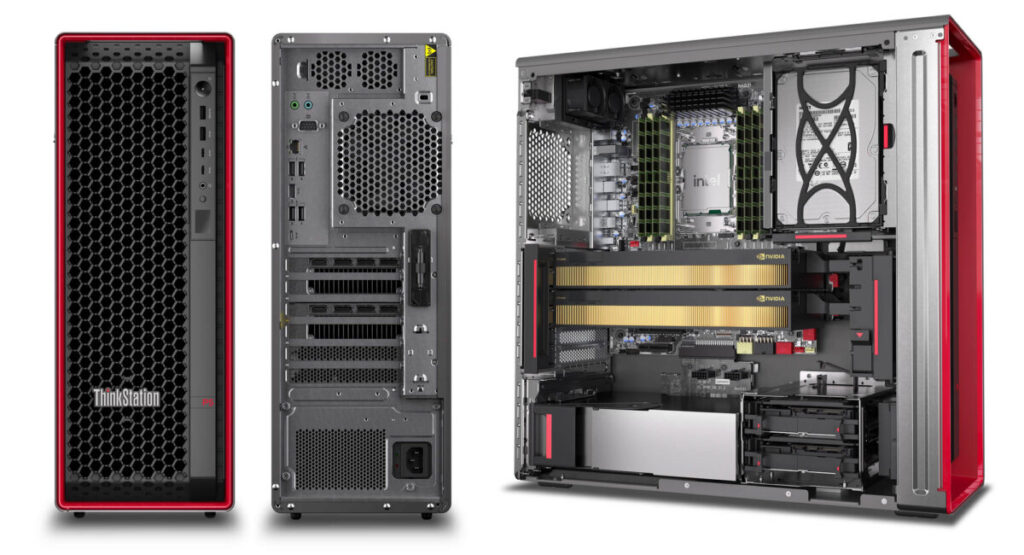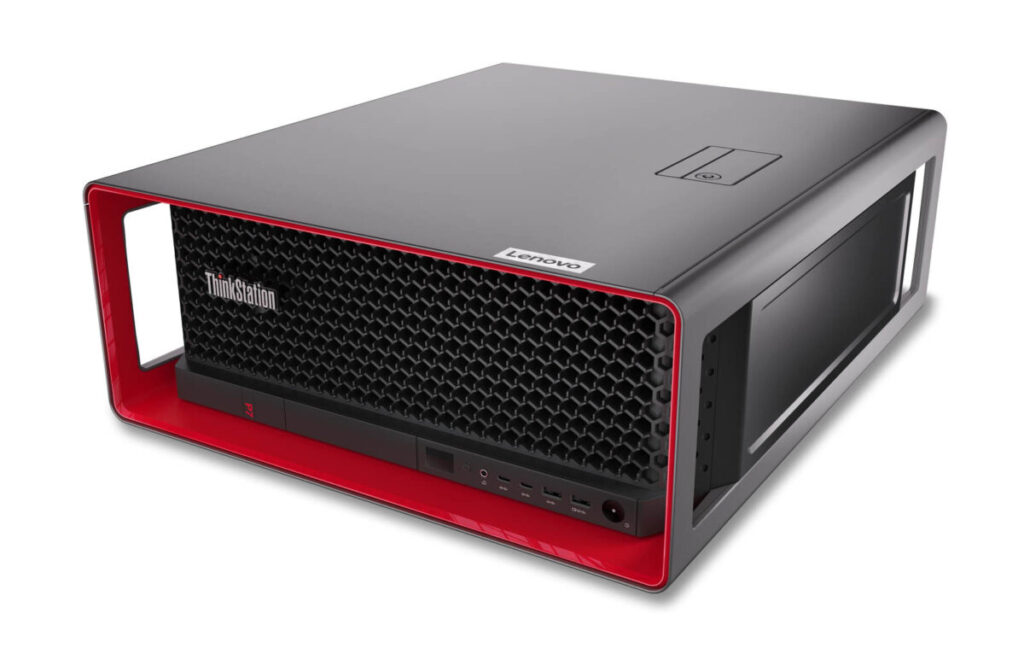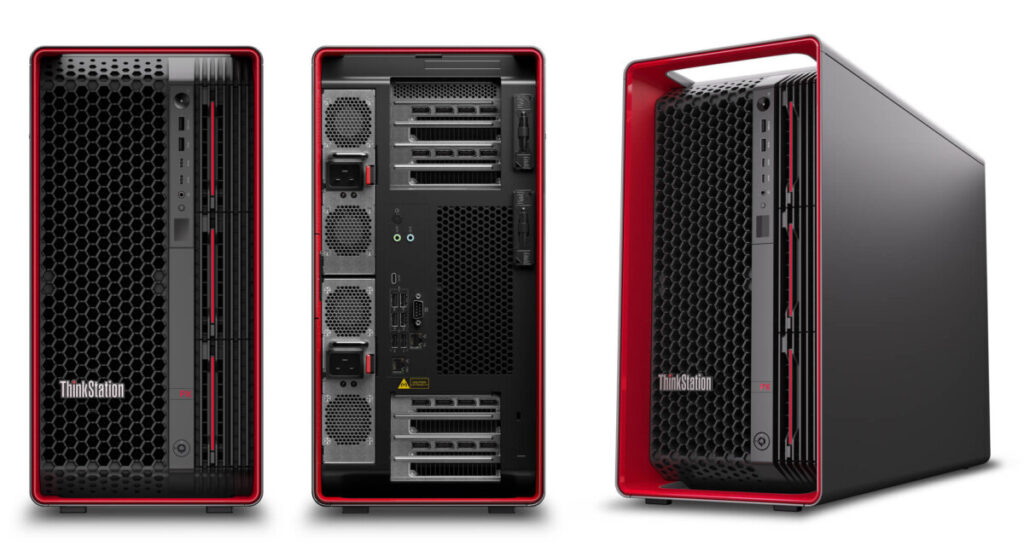
Lenovo’s Aston Martin ThinkStations
Let’s be frank: when it comes to high-powered workstations, the real stars of the show are the graphics card and the processor. That’s where you need to spend your money. But fair play to Lenovo, as it’s brought a third factor into play: style.
We’ve seen plenty of partnerships between tech manufacturers and car makers before, with Porsche even having an online shop toting its wares. But watching the slick presentation earlier this week (highlights below), it was obvious that Lenovo and Aston Martin had struck a deeper partnership. Heck, they even seemed to like each other.
So, what’s happened?
In short, Lenovo and Aston Martin co-designed some workstations. You can choose between the ThinkStation PX, ThinkStation P7 and ThinkStation P5.
We can almost simplify the partnership to two words: grill and airflow. Although the two are intrinsically combined together, for it is the grill that feeds the airflow.
It makes sense. High-performance car manufacturers must balance the needs of an attractive design with superb airflow if they are going to sell their wares. High-end chips need cooling to match. And if your customers are designers, chances are that they want their systems to look beautiful on the outside as well as the inside.

Lenovo ThinkStation P5 in brief
Let’s start with the Lenovo ThinkStation P5. This desktop workstation uses Intel’s Xeon W processors and up to two Nvidia RTX A6000 graphics cards. Here, that means up to 24 cores in the CPU and a card that’s well suited to architects, designers, engineers and creatives.
What sort of tasks is the P5 designed for? Lenovo cites “BIM [building information modelling], complex 3D CAD, reality capture and geospatial visualisation, visual effects and edge deployments”.
And here’s what the Lenovo ThinkStation P5 looks like:

Lenovo ThinkStation P7 in brief
What do you buy if a ThinkStation P5 is just too much of a weakling? The ThinkStation P7, of course. This again uses Xeon W processors, but here the core count goes up to 56 rather than 24.
And why put up with two Nvidia RTX A6000 graphics cards when you can have three? Here are the main audiences as far as Lenovo is concerned:
- content creators
- architects
- designers
- engineers
- data scientists
In short, anyone who requires staggering levels of graphics, visualisation, real-time rendering and AI performance. Although you can use the ThinkStation P7 as a desktop workstation, they have also been designed to fit into 4U rackmounts.

Lenovo ThinkStation PX in brief
And then we come to Lenovo’s new king of workstations: the ThinkStation PX. No measly Xeon W chips here: the PX is powered by Intel’s fourth generation Xeon Scalable processors, with up to 120 CPU cores. Intel claims the fourth gen Scalables offer a 53% performance gain (on average) over the prior generation.
The PX will include integrated Iris Xe graphics – okay, kidding. This beast will house up to four of Nvidia’s RTX A6000 graphics cards, and will basically be able to remodel the world in two seconds. Or, to quote Lenovo’s rather humbler claims: “[the PX] can manage and execute the most complex workflows found in today’s work environments including creative finishing and CAE [computer-aided engineering] simulation”.
Final ingredients include up to 2TB of DDR5 memory, PCIe Gen 5 support and an 1,850W power supply. With optional redundant power supplies too.
If all that sounds like too much for your desk to handle, then you can again mount this beast a rack. Indeed, Lenovo reckons the ThinkStation PX will find itself in data centres.

Lenovo’s Aston Martin ThinkStations: price and availability
Let’s tackle the easy question first: the three workstations will be available from May 2023. Lenovo has so far stayed coy on pricing.
If you want to be notified when they become available, head to Lenovo’s workstation page and scroll down to the “Notify me when available” section.
NEXT UP

Eight lessons from building an AI product
In 2021, long before ChatGPT, Prashant Mahajan built his own generative AI tool for product managers. Here, he shares his playbook for building an AI product that will stand out from the crowd.

Taavi Tamkivi, Founder and CEO of Salv: “Collaboration between financial institutions, or rather lack of it, has traditionally been a challenge”
We interview Taavi Tamkivi, the Founder and CEO of Salv, a regtech company on a mission to beat financial crime

Apple AI iPhones move one step closer with on-device AI experiments
Apple AI iPhones are a distinct possibility with the release of experimental language models that could run easily on a phone